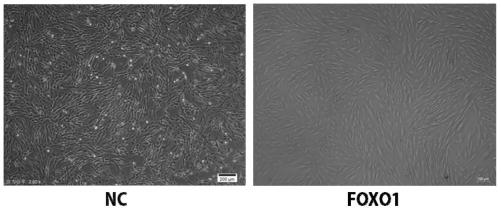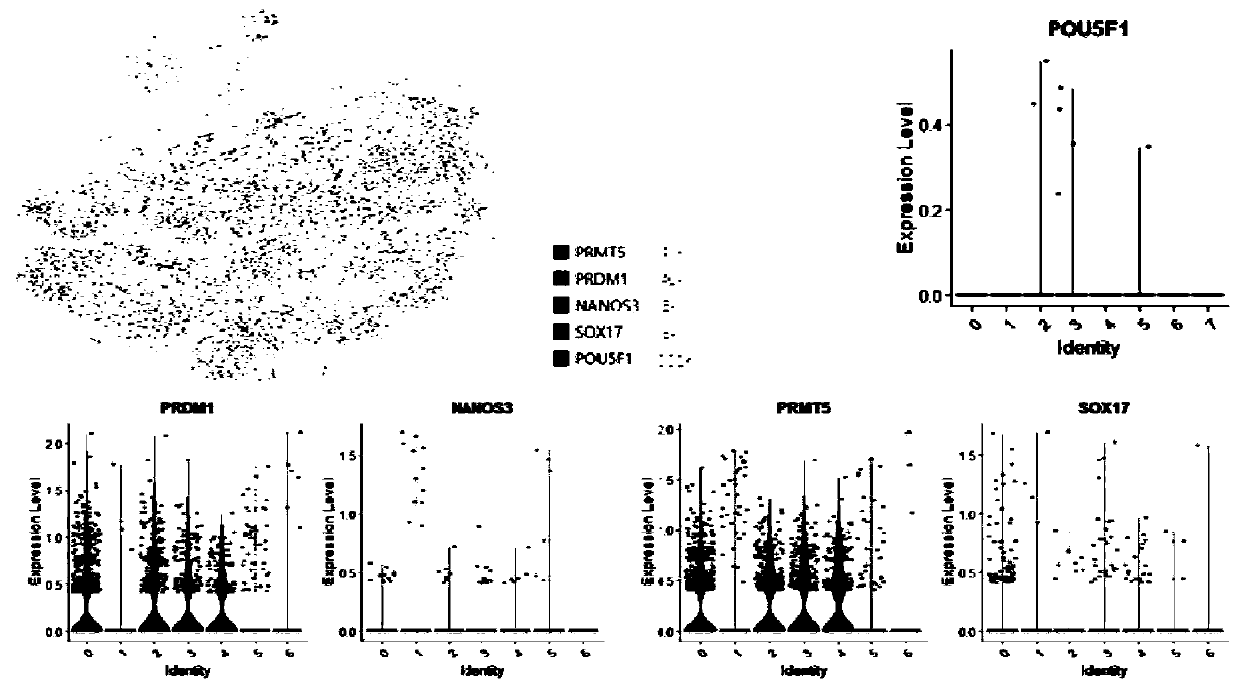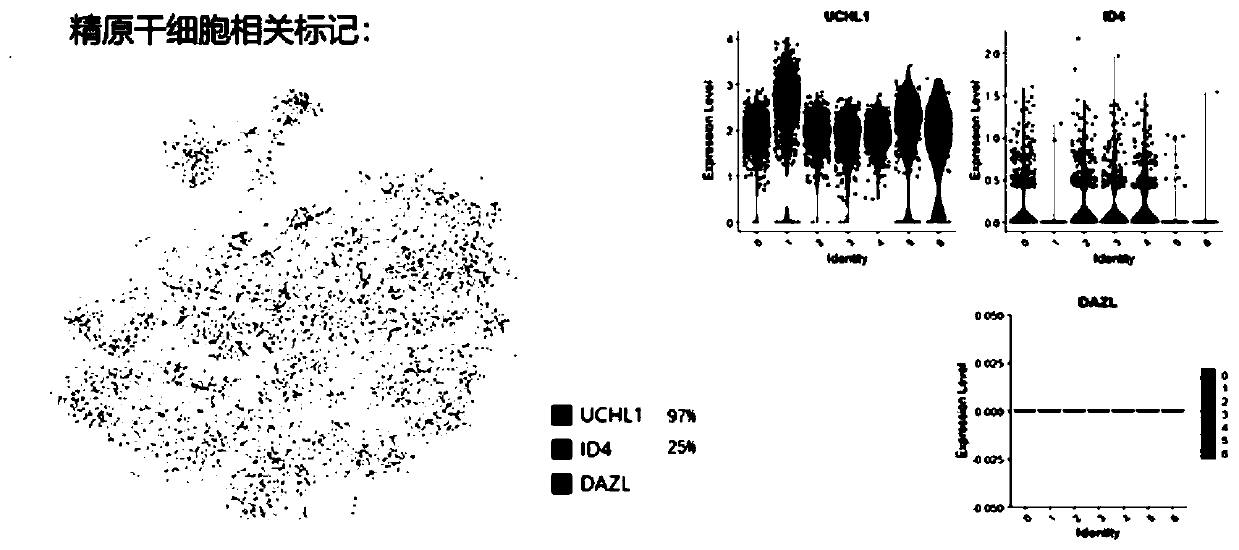Method for directly transdifferentiating mesenchymal stem cells into sperms by using transcription factor FOXO1
A technology of mesenchymal stem cells and transcription factors, applied in the field of using transcription factor FOXO1 to directly transdifferentiate mesenchymal stem cells into sperm, can solve the problem of failure to obtain mature male germ cells, and to detect the markers that cells enter the meiotic stage, etc. question
- Summary
- Abstract
- Description
- Claims
- Application Information
AI Technical Summary
Problems solved by technology
Method used
Image
Examples
Embodiment 1
[0055] This embodiment provides a method for introducing the transcription factor FOXO1 into the mesenchymal stem cells through lentiviral transfection, including the following steps:
[0056] The green fluorescence control lentivirus (rLV-ZsGreen control lentivirus) was used to infect HuMSCs, the infection efficiency of the cells was observed, and the most suitable infection conditions were found.
[0057] (1) Prepare target cells
[0058] 1) Digest the HuMSCs that have proliferated to 80%-90% in the T75 flask with 0.05% trypsin. When the cells are digested and shrink to a round shape under a microscope, immediately add complete medium containing 10% FBS to stop the digestion, and collect the cells into a 15mL centrifuge tube.
[0059] 2) Centrifuge at 1000rpm for 5min, remove the supernatant, add fresh complete medium and gently blow off the cells, count on a hemocytometer, and make 3-5×10 4 cells / mL cell suspension, inoculate into the culture plate and continue to culture...
Embodiment 2
[0070] This embodiment provides a method for introducing the transcription factor FOXO1 into the mesenchymal stem cells by means of electroporation, including the following steps:
[0071] (1) Select HuMSCs of 3-5 generations to ensure that they are in the logarithmic growth phase (because the cell division in the logarithmic growth phase is vigorous, the surface structure is less compact, and after cell electrotransfection, foreign DNA is more likely to enter the mitotic phase cells), digest the cells with trypsin, collect the cells after termination of digestion; centrifuge at 1000g for 5 minutes, discard the supernatant, add EP buffer, resuspend the cells, continue to centrifuge, and wash 2-3 times with EP buffer, and finally resuspend For cells, the purpose of repeated washing is to effectively wash the serum on the cell surface and prevent the reduction of transfection efficiency, but the washing process should be gentle to avoid damaging the cells.
[0072] (2) Cell coun...
Embodiment 3
[0081] This embodiment provides a method for introducing the transcription factor FOXO1 into the mesenchymal stem cells by lipofection, comprising the following steps:
[0082] (1) Inoculate a certain number of HuMSCs cells into a 6-well plate, and perform transfection when the cell density reaches about 70%.
[0083] (2) Prepare the transfection mixture:
[0084] Mixture A: 4μl-8μl Lipofectamine3000+250μl Opti-MEM medium;
[0085] Mixture B: 3 μg plasmid carrying FOXO1 gene + 6 μl P3000TM + 250 μl Opti-MEM medium.
[0086] Mixture C: Mix Mixture A and Mixture B thoroughly, avoid repeated pipetting, because it will damage the DNA-liposome complex and reduce the transfection efficiency. Let stand at room temperature for 10-15 minutes to form a stable DNA-liposome complex.
[0087] (4) Transfection: Because starvation of cells can improve transfection efficiency, transfection mixture C was added to cells that had been starved for 1 hour, and then the cells were placed in a 37...
PUM
 Login to View More
Login to View More Abstract
Description
Claims
Application Information
 Login to View More
Login to View More - R&D
- Intellectual Property
- Life Sciences
- Materials
- Tech Scout
- Unparalleled Data Quality
- Higher Quality Content
- 60% Fewer Hallucinations
Browse by: Latest US Patents, China's latest patents, Technical Efficacy Thesaurus, Application Domain, Technology Topic, Popular Technical Reports.
© 2025 PatSnap. All rights reserved.Legal|Privacy policy|Modern Slavery Act Transparency Statement|Sitemap|About US| Contact US: help@patsnap.com



